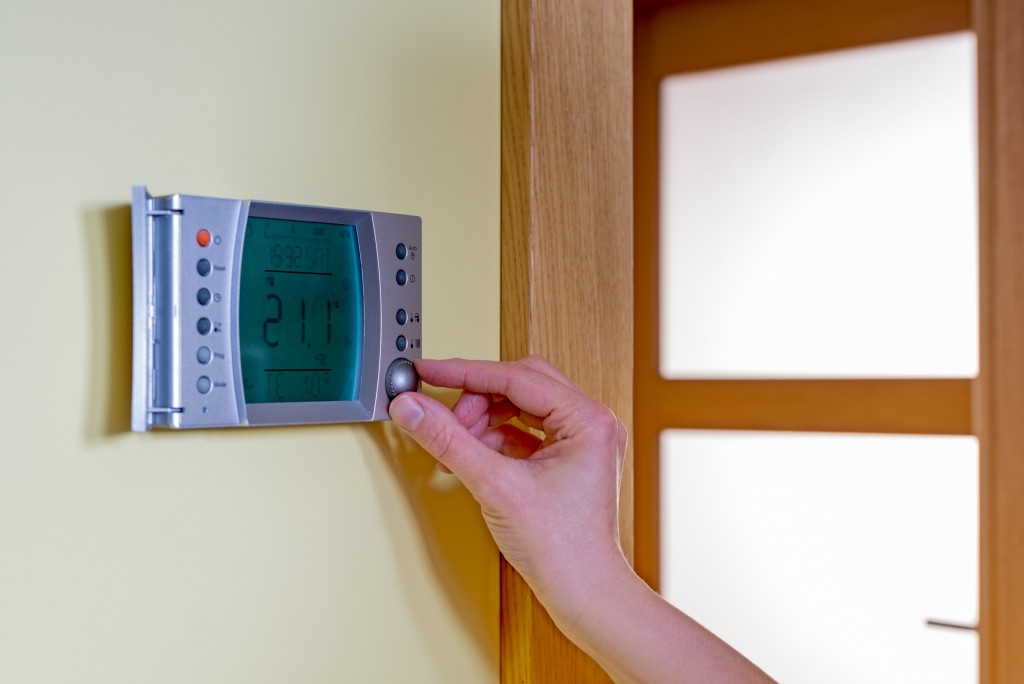One of the main reasons people want smart homes is to reduce their carbon footprint. Why? Because smart homes provide homeowners more control over their house, which helps them save significant amounts of energy and heat for a more eco-friendly lifestyle.
Even if your main goal is to live like the Jetsons, having a smart home will inevitably save energy without much effort on your part. Most smart homes are designed to be more energy-efficient than their older counterparts, which means that you are also saving money in the long run. But why exactly are smart homes energy-efficient? In what ways are smart home features helping you save energy?
Here are some common technologies that make a smart home more energy-efficient:
Programmable thermostat
A programmable thermostat is a staple in any smart home. Unlike a traditional thermostat, a programmable thermostat automatically adjusts the temperature in your home using pre-programmed settings for different times of the day. For example, if you have your custom window blinds or covers up during the day to let in sunlight from the outside, you can program your thermostat to automatically reduce the temperature at this time.
Aside from keeping the temperature inside your house comfortable, this feature helps you save energy all-year-round, which, of course, translates to pretty hefty savings in utility bills. But more importantly, you’re reducing your impact on the environment by only using up the energy that you need for heating.
Heat monitoring
A smart home can be equipped with a heat monitoring feature, which detects which rooms you are in so that it can adjust the temperature accordingly. Since there is no sense to heat up the bedroom while you are in the living room, this feature will help you avoid wasting heat and keeps the temperature comfortable wherever you go.
Smart power strips and outlets
There is a phenomenon called “energy vampire” which refers to electronics and appliances that continue to suck up power while they are plugged in, even when you are not using them. Common energy vampires are phone chargers, laptop chargers, TVs, and other devices that are on standby mode. Of course, you can avoid this needless waste of energy by unplugging devices from outlets, but this can be tedious.
A good alternative is to use smart power strips or outlets. With these types of devices, you can plug in your electronics as normal, but they won’t continue consuming energy when they are turned off. Moreover, you can easily cut the power to every device that’s plugged in with one push of a button.
Smart lighting
There are two reasons why this smart home feature improves energy-efficiency. First, smart lighting systems automatically turn off when not in use (you can do this yourself, but it’s sometimes a hassle and often easy to forget). Second, smart lighting systems make use of LED bulbs, which are more energy-efficient and last longer than other types of light bulbs, such as halogen and incandescent.
Smart energy monitors

Do you often find yourself surprised by how high your energy bill is? If so, then you might need to increase your efforts in monitoring the power meter. However, monitoring the meter is not only inconvenient, but it’s also not very effective. You’d have to check it frequently to see if your household is not using more energy than they need to, which is just not feasible.
Luckily, modern technology has given us smart energy monitors. This type of smart home device can track your energy usage in real-time even when you are not at home. There are also some devices that come with appliance detection features, which can help you determine which appliances or devices are on and when. This will allow you to figure out what’s causing the bulk of your energy consumption, helping you stop energy drainage in its tracks and adjust your household habits as needed.
Programmable sprinklers
Keeping your lawn hydrated requires a lot of water and energy. But with a programmable sprinkler system, you can set your lawn to be watered only when it needs watering, helping you save both energy and water.
A programmable sprinkler control system considers the weather, soil moisture, type of plants, and other pertinent factors when watering your lawn. Hence, you don’t have to worry about overwatering or underwatering when using this type of smart home device.
Equipping your home with these types of smart devices will not only make life more convenient, but it will also make your home more energy-efficient. Aside from helping you save a significant amount of money on utility bills, having an energy-efficient home greatly reduces your impact on the environment–something that’s so important today in the light of climate change.

